Through Karel Nel’s early "mind’s eye" drawings from the 1980s, we share his innermost experiences, while his more recent explorations take us out into the cosmos and beyond. Nel's work is astounding in its breadth and depth; an artist carrying equal torches for science and the sacred.
The walkabout we attended for Close and Far was packed. We migrated with Nel from artwork to artwork as he waited for the crowd – some 180 people affectionately termed “the centipede” – to arrive in tow. For someone navigating such lofty themes as the nature of consciousness and mysterious dark matter, Nel has one eye ever on terrestrial concerns. Is it useful? Is it beautiful? If the answer is “yes”, we can be sure he’s interested.
Listening to Nel is easy. He speaks with the authority of a seasoned teacher and the warmth of a life-long friend [if can make it to the closing walkabout with Nel and Close and Far curator Fiona Rankin-Smith at WAM on Sat, Aug 3, we're certain you'll agree].
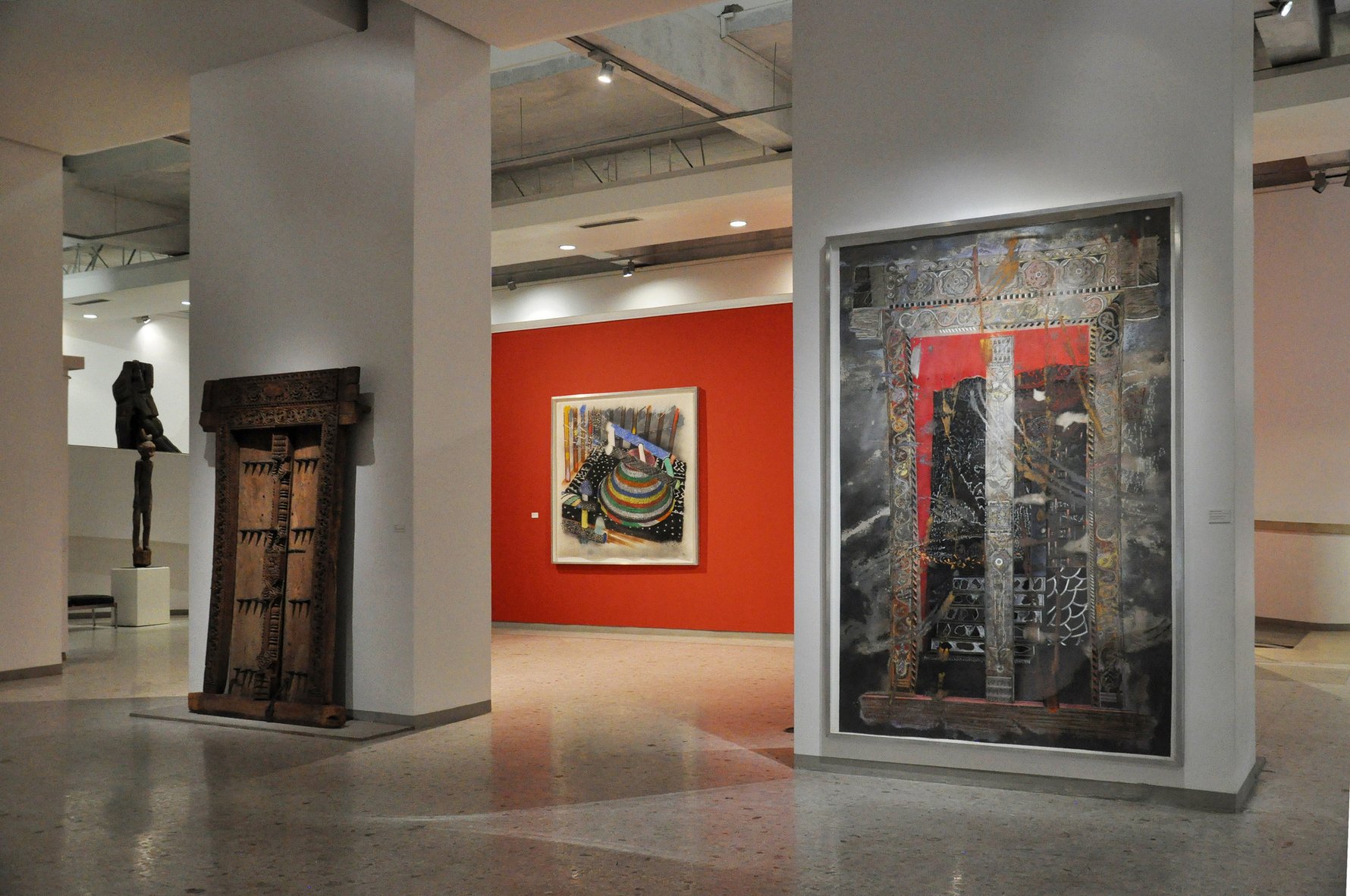
Looking into Nel’s work is challenging. Not because it’s grotesque or deals with difficult subject matter. Though, at times, the latter is true. Nel himself admits that he expects a level of engagement from his audience that goes beyond the surface of things. Underneath his keen talent as a maker of images and objects is a world of ideas that are rewarding, provoking, terrifying, and fortifying. Questions to last you a lifetime.
Close and Far is Nel's first solo show of this magnitude in South Africa in many years. His art career has mostly taken place abroad, though he began his studies at the University of Witwatersrand, majoring in sculpture, before his post-grad at Central Saint Martins took him to London. While he travels frequently and extensively, Nel's home base is 'The Mudhif' – part studio space, part living quarters, part museum for his ever-growing collection of African and Oceanic art (Nel has been collecting since he was 11 years old), built on the same Rivonia property that he grew up on. But that's a story for another day.
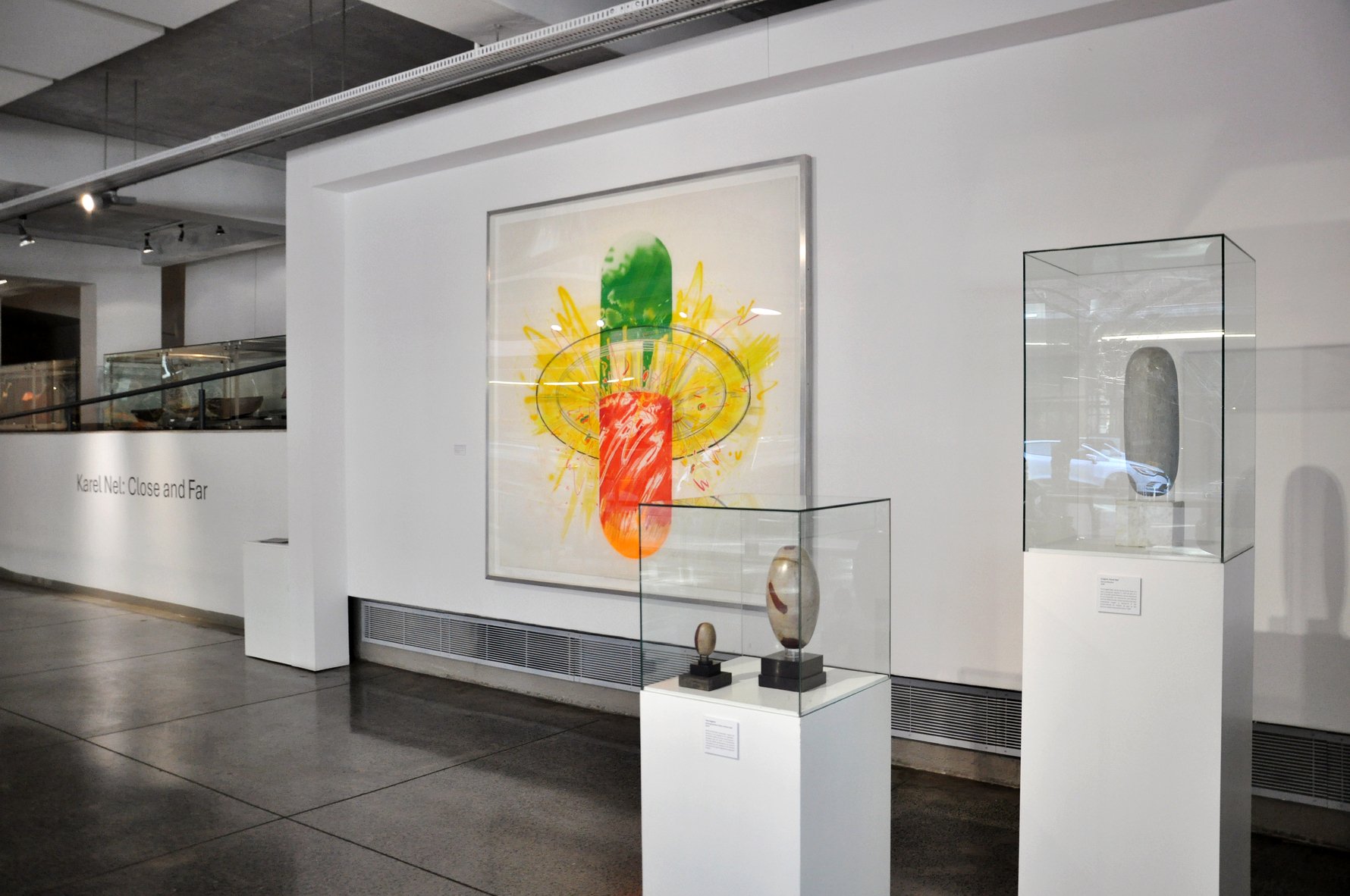
Shortly before he was to leave for Saint Martins, Nel carved steatite stones for two of his heroes in 1976. Poised at the entrance of WAM's gallery, one of these smooth, cylindrical shapes based on the Hindu lingam or cosmic egg is the artist's only sculptural work in the exhibition. Nel cracks a nod to the biblical Jacob, who slept on a stone and dreamed of a ladder leading to heaven, and famous architect Le Corbusier, inventor of the concrete slab. "Both visionaries who altered our way of being in the world," he tells us.
In the image on the wall behind titled Reconciliation of the Opposites – explosively yellow, green, and orange – polar energies unite. "It's a reconciliation of the masculine and the feminine, Jung's anima and animus," says Nel. For him, the call to art is an invitation to harmonise these elemental forces within ourselves, facilitating the release of creative energy.
Studying under Anthony Caro and Phillip King in London, Nel was instructed to refrain from drawing to prompt pictorial sculpture. As he rightly points out, a surefire way to get a curious artist to do something is precisely by telling them not to. He compromised by drawing what he saw with his eyes closed. These mind's eye drawings are a cartography of Nel's inner experience, illustrating the colours, patterns, and shapes seen shut-eyed, caused by activity between neurons in the brain and one's vision.
"Every line has a frequency," says Nel. Spiral forms are a recurring motif in works created during this period. The artist says, "Our manifest world is informed by rotation. From atomic structures to the solar system, nothing can exist without it." In the realm of mythology the omphalos, a conical shape represented most famously in an ancient marble monument at the archaeological site of Delphi in Greece, is regarded as the navel of the world.
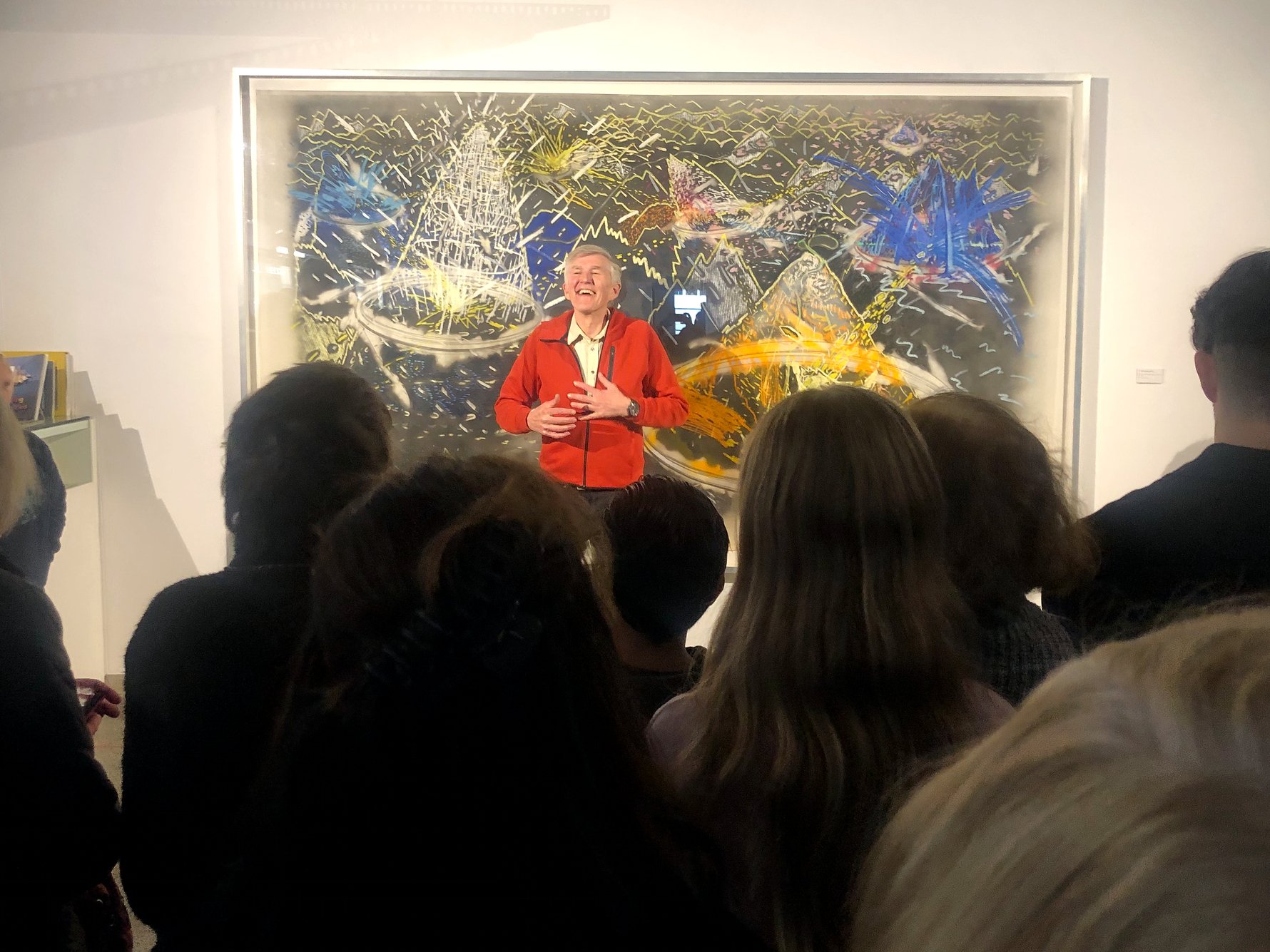
After all this inner vision, Nel felt like he'd gone swimming too far out at sea. It was time to look from the outside in. Having returned to Joburg, he was staying in a small room at the end of his parent's home, where he had three large drawing boards placed side by side. A series of quiet still lives emerged from this held space in the 1980s. The monumental scale of these works creates a sense of intimacy. In the work Two Presences there is an 18th-century Chinese chair, two bowls with leaves and flowers from the garden, and two subtle "presences" or indeterminate forms. In this, Nel gives plain visual perception and the ineffable equal treatment.
Leaves are a recurring feature in Nel's work; his 2005 exhibition In the Presence of Leaves paid tribute to the beauty and symbolic value of trees. Materiality is also a characteristic of Nel's practice. The ramp to WAM's downstairs corridor leads to some of the artist's subtler works in this exhibition, where Kepler's Sign is made with pastel and pigment on bark cloth while Elegies to the Forests: Rabal, New Ireland, Pacific is constructed from painted and stapled pandanus leaves (the material used to create the earliest examples of woven sails in the Pacific). These quietly evocative pieces share space with sacred texts on palm leaves from Southeast Asia and a Buddhist Diamond Sutra scroll on mulberry bark paper – just a few items from Nel's astonishing collection that are on display as part of Close and Far.
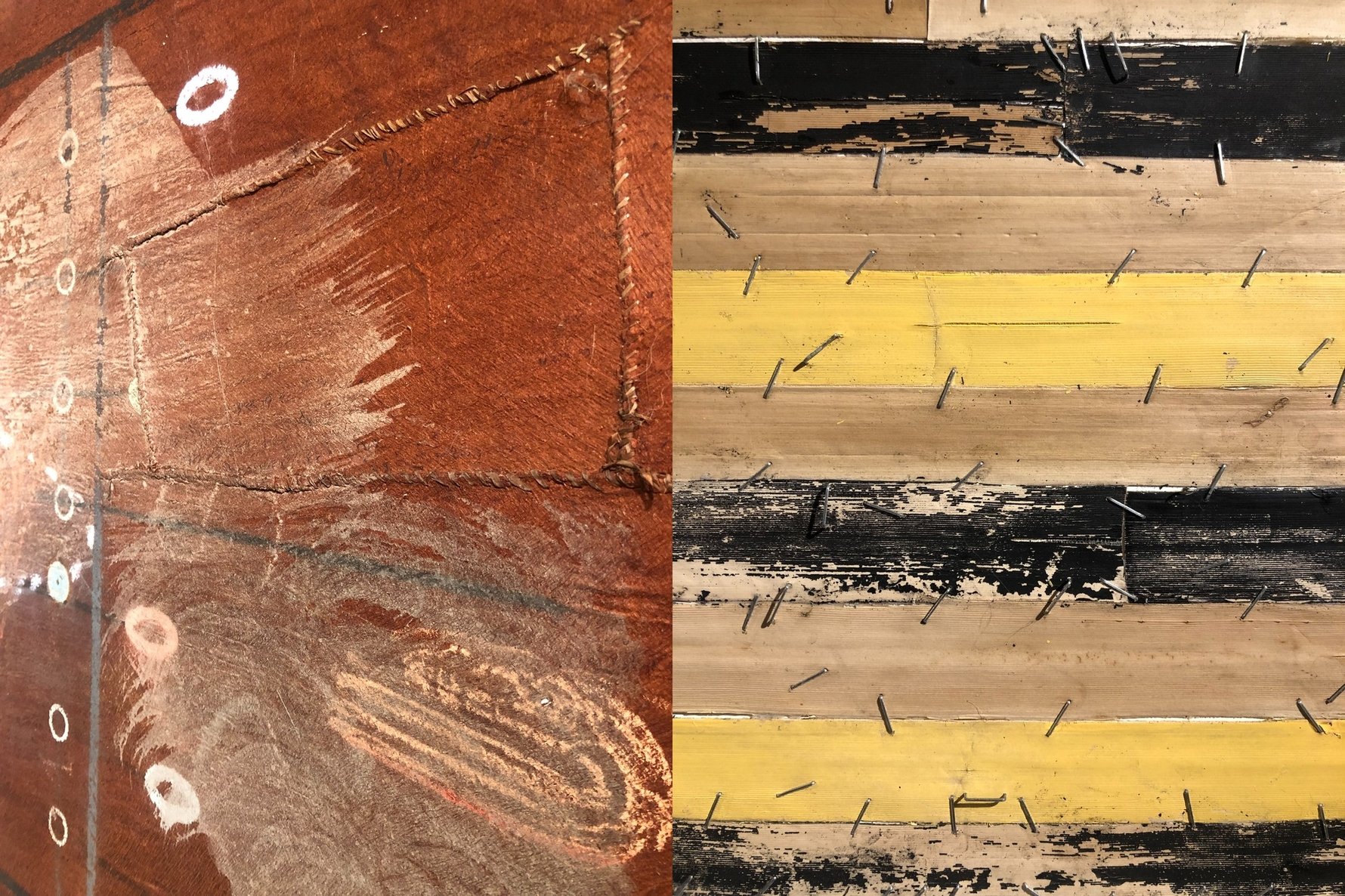
A pair of wooden Zanzibari doors bequeathed to South African artist Alexis Preller by Modernist architect Norman Eaton, and later tracked down and acquired by Nel, each sit aside a monumental work in WAM's central exhibition space. In these, titled Initiary Portal and Portal and Antahkaranic Tower, Nel teases out the symbolic resonance of doorways as threshold spaces. Created using direct rubbings from the intricately carved doors, these works bridge the physical world of objects with intangible realities. The striations, which are the kind of claw-like patterns in the works, as though a tiger scratched through fabric, are Nel's way of representing what he describes as nondefined energy. "It's like putting your hands out when you're finding your way in the dark," he says.
The sheer scale of Nel's works is remarkable. And with portals on the brain, you'd be forgiven for thinking you could walk right in – it's the wardrobe in Narnia all over again. Pieces like the pulsating Sound of the Rod are large enough to engulf you, quite like the ideas they spring out of. "Drawings like this deal with many things," says Nel. "I don't always know myself." Charming humility when moments before he was talking particle physics and sacred mandalas. Yet he playfully asserts, "If you don't know what you're doing, it must be art." This is something he's been known to say to his students, but it holds true for his inquisitive practice as well. "Art isn't like advertising," he tells us. "It's about finding your way."
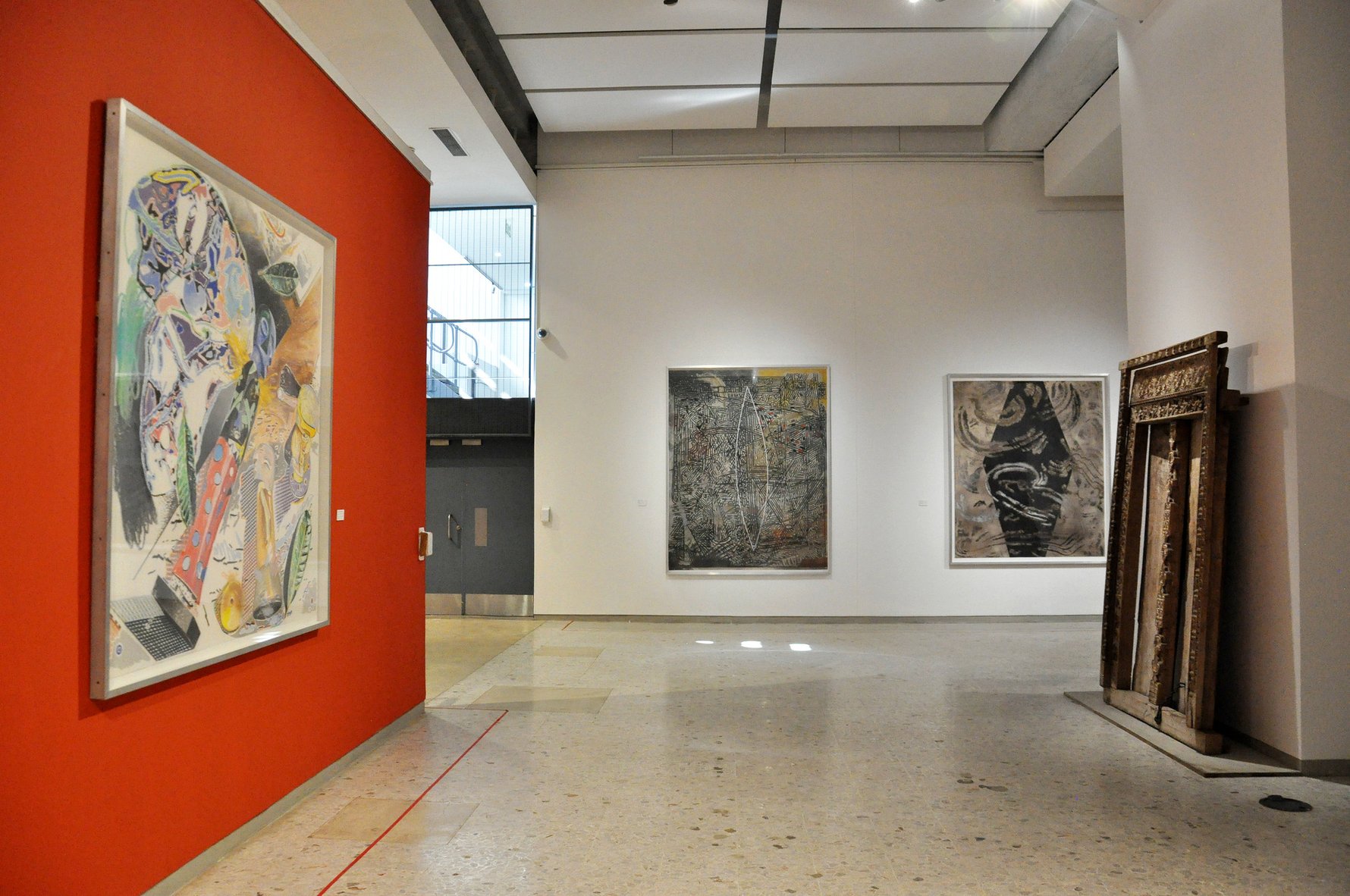
Well, Nel's practice is ripe, and he's found his way into the curious position as resident artist for some of the world's leading astronomers. Once you ascend the ramp to the top floor of WAM's gallery space, you start seeing stars. On the way, however, three puzzling works climb with you, and in the middle we meet (albeit as a shadowy figure) Nicholas Scoville – the astronomer Nel himself met 20 years ago as he was embarking on a project to map part of the universe. Scoville and the Cosmic Evolutionary Survey (COSMOS) team explore a two-degree square of space below the constellation of Leo; a veritable postage stamp in the night sky, in which 1.5 million galaxies have been found. "Like a probe into the universe," as Nel describes it. "And the distances are enormous. This was the first time we’ve been able to look out beyond the glare of the sun and the moon."
Going on two decades, the artist's role has been to offer a terrestrial view of what these astronomers are doing. "Because they live up there, they live in the details," he says. Next to the image of Scoville is Nel's Studio as Observatory. Ultimately, his home studio space in Joburg is where he comes to terms with the ideas, insights, images, and raw data that he's been exposed to at observatories around the world.
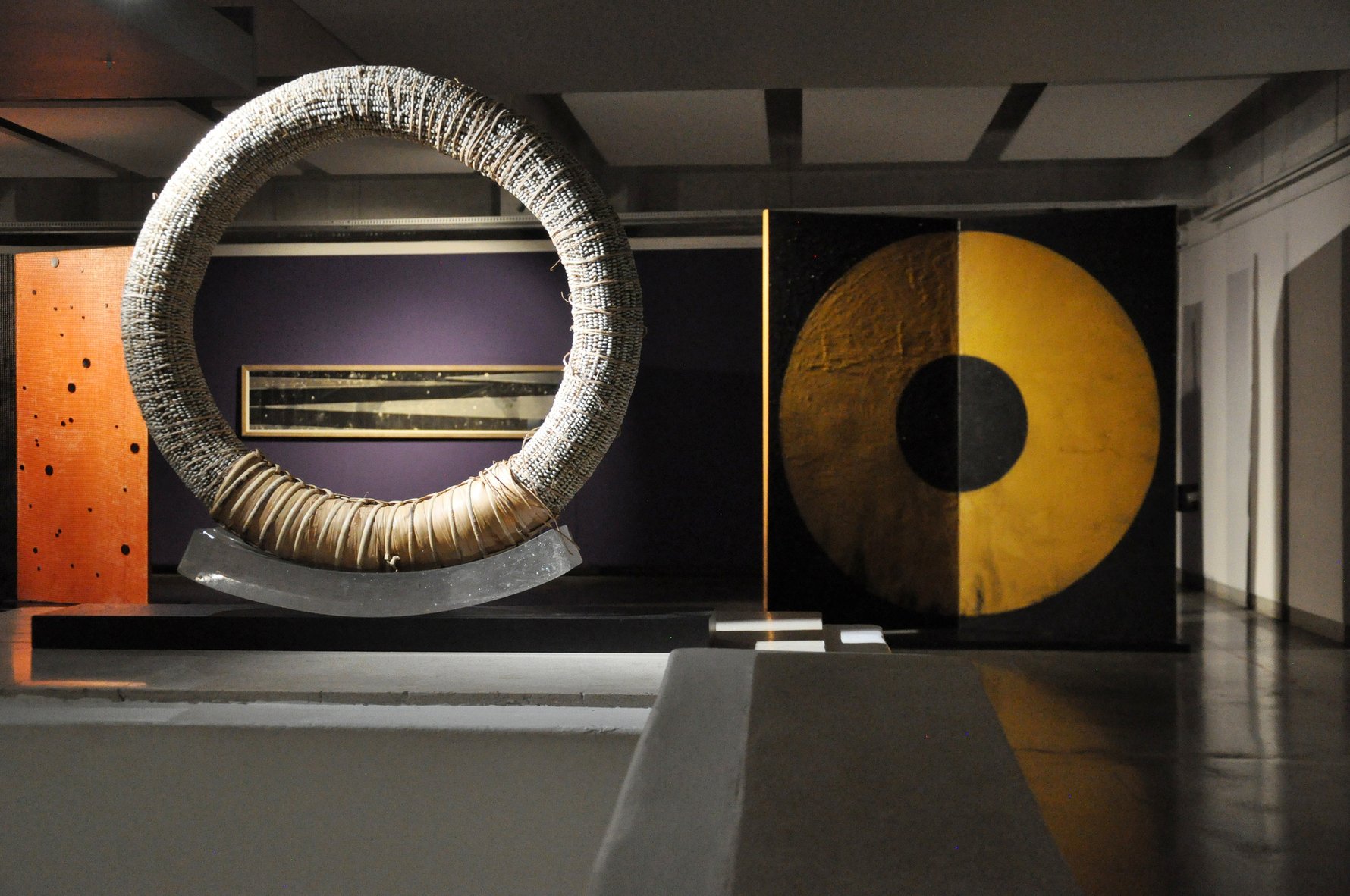
Though huge, Nel's works are invitational. Even the imposing black and yellow folding screen, Zero – a pivotal work on loan from a Seattle collector – has a way of stopping visitors in their tracks. This piece signals a shift in gears for Close and Far as the works take a more abstract turn, relying less on Nel's exquisite skill as a mark-maker. The number zero caused a stir when it was proposed by Arabic mathemeticians in the 12th century. It was misunderstood as nothing, but it's not. "Zero is a particular point from which negative numbers move into infinity from one direction, and positive numbers move into infinity in another," Nel explains. He regards zeroes as the "keepers of order" and indeed, it's a discovery that underpins much of modern engineering and automation and has shaped the world as we know it.
So how does an artist square Zero? If you're Karel Nel, black paint from a tube simply won't do. Working with a geologist, he collected black dust laid down in Gondwanaland before the landmass split off into continents – this forensically early plant material could be up to 550 million years old. The yellow eye is cyanide-laden sand from the mine dumps of City Deep; one of the early gold mines of Johannesburg. "When I finished the work it felt as though it looked at me," says Nel. "It captures the gaze." The book-like form of this work echoes Nel's philosophy; "My work is to be read, not looked at. Seeing is passive while observing is about deducing. That's what I expect of my viewers. If they are interested enough, it is excavatable."
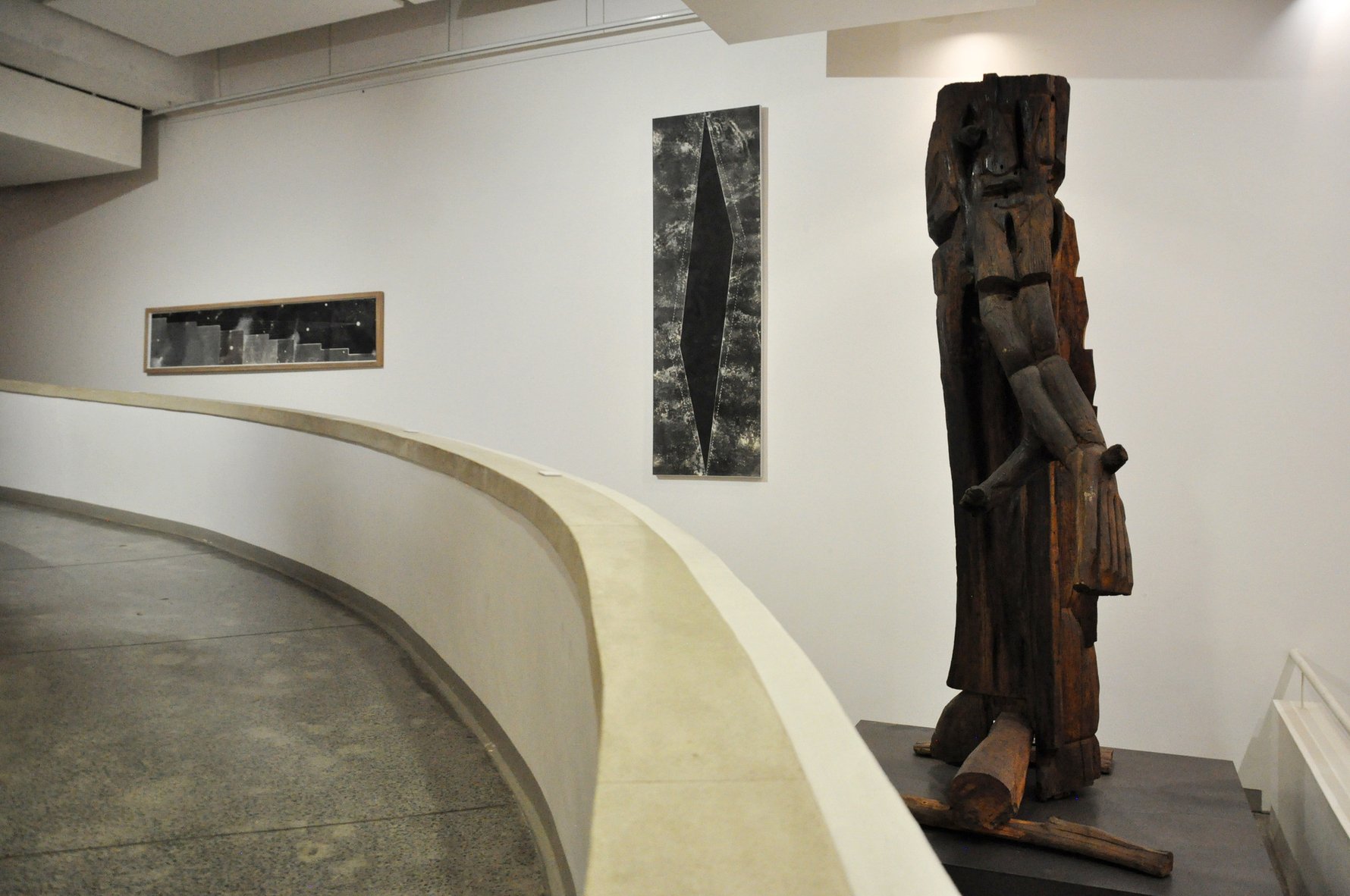
From the late 1980s to 2003, Nel spent time with the last of the celestial navigators in remote parts of Micronesia and Polynesia, and a number of the objects in his cabinets of curiosity that are part of the exhibition – like the graceful tackle boxes and carved stone fishing weights, or the flying fox inspired ceremonial kava bowl – come from these places. While our technologies differ greatly from those of our forebears, the quest to understand the world and our place in it seems to be a constant. "For me what is intriguing is that our species has always tried to find their way using the stars," says the artist who, in his own manner, is doing much the same.
"We have an unbelievable planet with plants, animals, and each other – that needs to be treasured," Nel says. While he certainly travels far out in his thinking, following the gaze of astronomers today or starry seafarers of the past, it's concerns of a profoundly human nature that keep his feet planted firmly on Earth. That is his great gift.
Close and Far shows at the Wits Art Museum (WAM) until Sat, Aug 3, 2024. Karel Nel and curator Fiona Rankin-Smith will present a closing walkabout; follow @witsartmuseum_wam on Instagram for details. To pre-order the book, Close and Far, loosely based on the survey exhibition and Elizabeth Burroughs' extensive conversations with Nel, email lizmburroughs@gmail.com


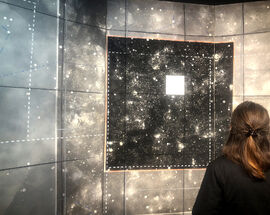
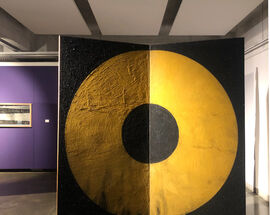



Comments